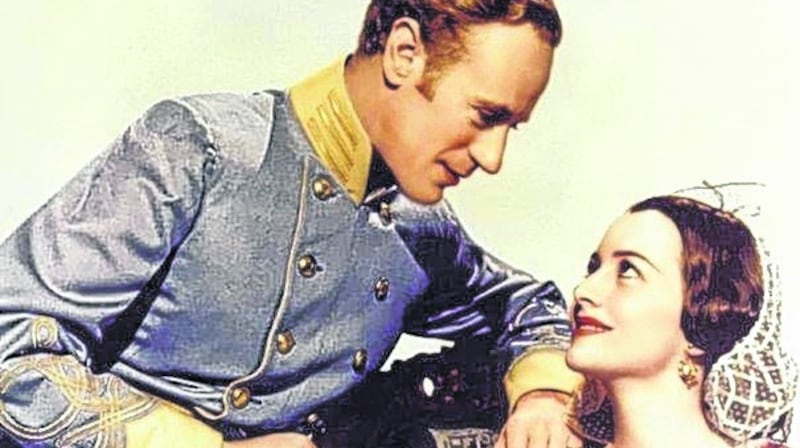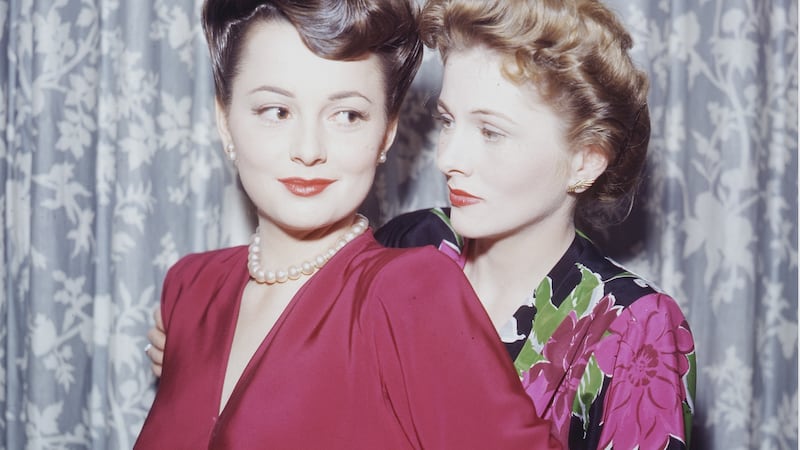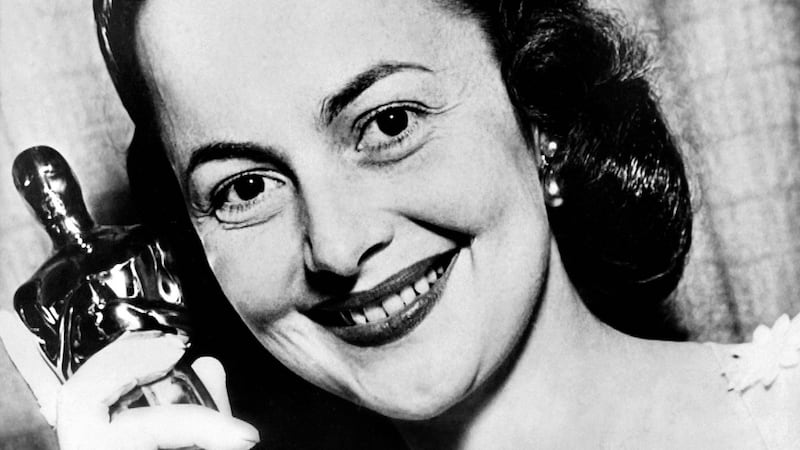It is hard to overestimate the significance of Olivia de Havilland's death to Hollywood. De Havilland, whose death in Paris was announced on Sunday, was the final surviving superstar of the golden epoch that lasted from the advent of sound to the late 1950s. More particularly, reaching her 104th birthday earlier this month, she was, for many years, the only remaining idol of the interwar period – Kirk Douglas, who died in February, was an exact contemporary but he did not land in Hollywood until the mid-1940s.)
All sorts of connections with earlier eras have finally been severed. De Havilland first appeared on film opposite Jimmy Cagney in Max Reinhardt's legendary take on A Midsummer Night's Dream in 1935. Her partnership with Errol Flynn in swashbucklers such as Captain Blood and The Adventures of Robin Hood buoyed spirits during the Great Depression. In 1939, not keen to compete for the role of feisty Scarlett O'Hara, she willing played gentler, kinder Melanie Hamilton in the sensational Gone With the Wind. She became a Dame of the British Empire. She won two Oscars. She fought the studio system. She carried on one of the most famous family feuds in Hollywood history. Rarely had the phrase "end of an era" felt more appropriate.
De Havilland’s early life was complicated. Born in Tokyo when her father, a distinguished legal academic, was teaching at the university, she was a cousin of the de Havilland who formed the aviation empire. Both parents were English – her mother, Lilian Fontaine, was also an actor – but an attempt to move home got the family only as far as the San Francisco Bay Area. Dad ran off with the Japanese housekeeper and left Mum to raise his daughters in Saratoga.



De Havilland fell out with her stepfather over her theatrical ambitions, but she ultimately won the argument when, spotted in a local production of A Midsummer Night’s Dream, she landed the role of Hermia in Reinhardt’s singular film.
She went straight from that to buckle a swash with a then unknown Flynn. The two formed a perfect complementary partnership. The Tasmanian was (on film as in life) a charming rogue who promised forbidden pleasures to the adventurous suitor. De Havilland gleamed with an inner virtue that made all around – even those who’d brushed teeth and said prayers – seem like ill-bred hooligans. “Playing good girls in the 30s was difficult, when the fad was to play bad girls,” she said later. “Actually I think playing bad girls is a bore; I have always had more luck with good girl roles because they require more from an actress.”
Few contemporaries could, without compromising the roles, have made something so compelling of Melanie in Gone With the Wind or Marian in the still-magnificent The Adventures of Robin Hood. Her unshakable intelligence added colour to those potentially wan characters. She was not to be compromised.

De Havilland's acumen and stubbornness was to the fore during the war years when she elected to fight back against the studio's restrictive contract system. She won the case, but found herself blacklisted for close to two years. Undaunted, she stuck to her task and won her first Oscar playing an unwed mother in To Each his Own from 1946. A second followed opposite Montgomery Clift as Henry James's flattened heroine in The Heiress.
By this stage, the world was already aware of the perennially puzzling dispute with her sister Joan Fontaine. Both were Oscar-nominated as best actress in 1941 and, when she won for Suspicion, Fontaine could not shake off the lingering animus. "My paralysis was total," she wrote. "I felt Olivia would spring across the table and grab me by the hair. I felt age four, being confronted by my older sister." De Havilland allegedly rebuffed Fontaine when the latter came forward to congratulate her for winning for To Each his Own. They made up. They fell out again. De Havilland expressed shock at Fontaine's death in 2013.
Female stars in middle-age are treated more kindly now than they were in the middle of the 20th century. De Havilland struggled for film roles in the 1960s and, by the following decade, was working mostly in television. Married to Pierre Galante, an editor at Paris Match, from 1955, she moved to the French capital and remained there until her death.
As natural wastage took away her contemporaries, de Havilland emerged as the last living representative of a great American art form at its glorious peak. She appeared to a standing ovation at the 2004 Oscars. Queen Elizabeth made her a Dame in 2017 (about time, even if she never lived in the old country). That same year, to the delight of fans, the stubborn de Havilland re-emerged when she sued the makers of Feud, a series about the fight between Bette Davis and Joan Crawford, for portraying her – in the form of a zesty Catherine Zeta-Jones – without her explicit permission. She lost. She attempted to take the case to the Supreme Court. That effort failed too.
Every film enthusiast thrilled at the news she was still so alert. It comes as shock to learn that she wasn’t quite eternal.













